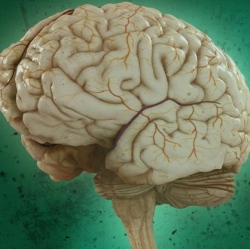
There is a solution to the dual challenges of growing and preserving neural stem cells in a state where they are still able to mature into many different cell types. The first challenge is that growing stem cells in quantity requires space. Like traditional farming, it is a two-dimensional affair.
If you want more wheat, corn or stem cells, you need more surface area. Culturing stem cells, therefore, requires a lot of relatively expensive laboratory real estate, not to mention the energy and nutrients necessary to pull it all off.
The second challenge is that once they’ve divided many times in a lab dish, stem cells do not easily remain in the ideal state of readiness to become other types of cells. Researchers refer to this quality as “stemness.” Heilshorn found that for the neural stem cells she was working with, maintaining the cells’ stemness requires the cells to be touching.
Above- An advance in growing large amounts of stem cells is described in a new journal article by Sarah Heilshorn, associate professor of materials science and engineering. (Image credit: luismmolina / Getty Images)
Heilshorn’s team was working with a particular type of stem cell that matures into neurons and other cells of the nervous system. These types of cells, if produced in sufficient quantities, could generate therapies to repair spinal cord injuries, counteract traumatic brain injury or cure some of the most severe degenerative disorders of the nervous system, like Parkinson’s and Huntington’s diseases.
Heilshorn’s solution involves the use of better materials in which to grow stem cells. Her lab has developed new polymer-based gels that allow the cells to be grown in three dimensions instead of two. This new 3-D process takes up less than 1 percent of the lab space required by current stem cell culturing techniques. And because cells are so tiny, the 3-D gel stack is just a single millimeter tall, roughly the thickness of a dime.
“For a 3-D culture, we need only a 4-inch-by-4-inch plot of lab space, or about 16 square inches. A 2-D culture requires a plot four feet by four feet, or about 16 square feet,” more than 100-times the space, according to first author Chris Madl, a recent doctoral graduate in bioengineering from Heilshorn’s lab
In addition to the dramatic savings of lab space, the new process demands fewer nutrients and less energy, as well.
The gels the team developed allow the stem cells to remodel the long molecules and maintain physical contact with one another to preserve critical communication channels between cells.
“The simple act of touching is key to communication between stem cells and to maintaining stemness. If stem cells can’t remodel the gels, they can’t touch one another,” Madl explained.
“The stem cells don’t exactly die if they can’t touch, but they lose that ability to regenerate that we really need for therapeutic success,” Heilshorn added.
Nature Materials – Maintenance of neural progenitor cell stemness in 3D hydrogels requires matrix remodelling
